BLOG
Building Technical Capacity for IoT Maturity
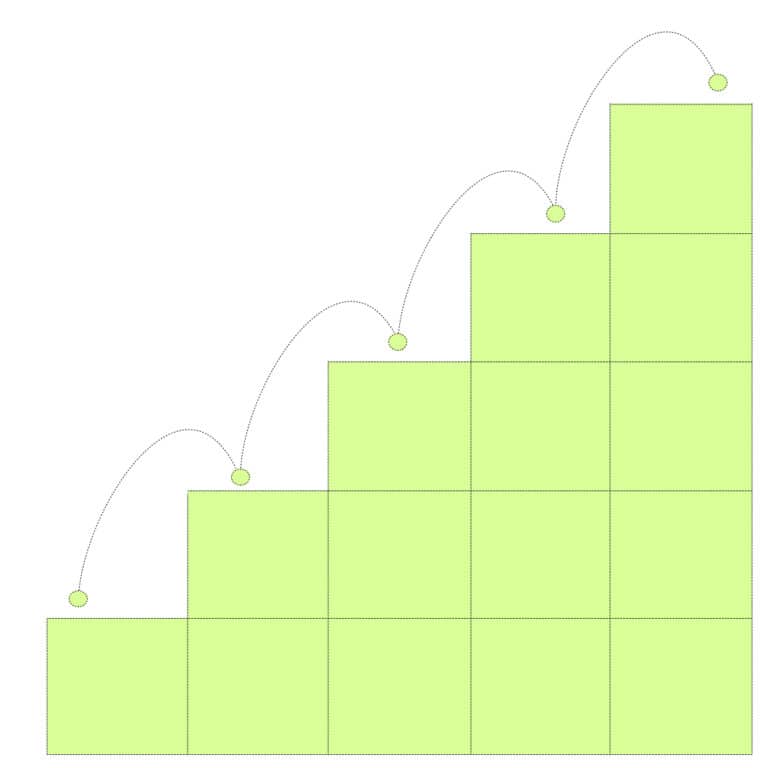
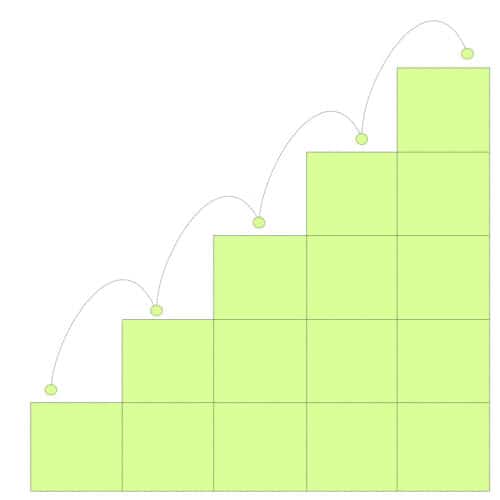
Achieving IoT maturity isn’t about having the “coolest,” most innovative product on the market. Your product’s maturity — and revenue potential — depends on its capabilities, and having the right resources in place as system complexity inevitably increases.
That’s why we developed the IoT Maturity Model — to help manufacturers understand what it takes to build a solution that sustainably fuels long-term revenue growth.
So how do you mature your IoT product? Make sure these technical skills are in place for each progressive stage.
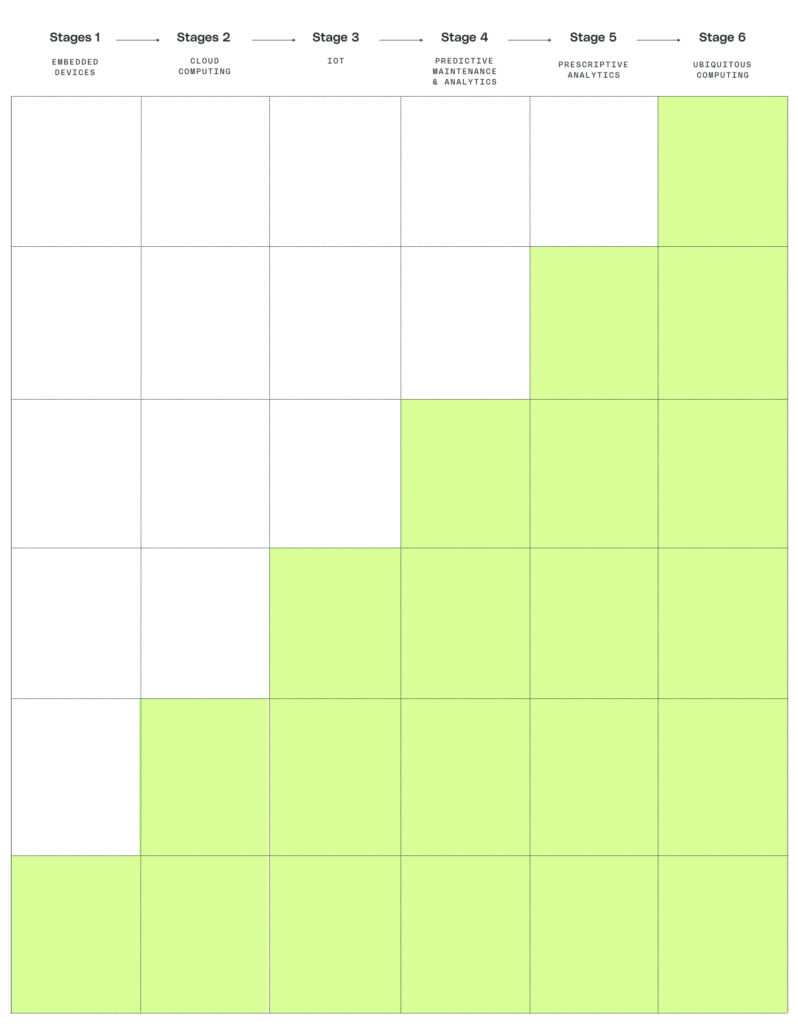
Ascending the IoT Maturity Model: Technical Skills Needed for Every Stage
Stage 1: Embedded Devices – Requires hardware and software engineering skills
Purpose-built electronic devices date back to Thomas Edison’s light bulb in 1879. Today, these products are known as embedded devices — and while they’re more complicated now than in Edison’s era, they’re still relatively simple in the IoT space.
Without any connectivity features, the technical challenges associated with stage one products are fairly straightforward. As long as your product teams have the required hardware and software engineering skills, your organization can create a stage one product.
Stage 2: Cloud Computing – Requires networking proficiency
Stage two devices connect to the internet, building on the relative complexity of stage one products with one crucial component: networking.
That means you’ll need communication protocols, network interface cards (NICs), and back-end infrastructure (including server infrastructure), which you’ll need to manage efficiently.
Cybersecurity also comes into play with networking. If you’re facilitating secure connections over a public, unsecured network — the internet — you’ll also need to invest in security talent for a successful stage two product.
Stage 3: IoT Connectivity – Requires a higher level of security, networking and development expertise
The third stage is where IoT solutions truly come into their own: interconnectivity. At this point, devices talk to each other and begin to form connected ecosystems.
Unsurprisingly, the technical challenges involved in building a connected product are more difficult. You’ll still need all the expertise from stages one and two, but now you’ll need an even greater skill level to be successful.
People ask a lot of their connected devices, yet these embedded systems work on constrained hardware. Integrating various services is a major hurdle, especially when their points of origin are so different.
Security becomes even more difficult, underscoring the need to think about and build security into the product from the start. For instance, you’ll want to embed a hardware security module (HSM) chip into your circuit board, but even that comes with a catch.
While a more powerful computer can dedicate a little disk space or processing power to “nice-to-have” or even downright unnecessary applications, IoT devices lack this luxury. In IoT development, we need to make every little bit count.
That’s why a platform like Nerves is so useful: it lets developers build a custom Linux system that only has what you need and nothing more. Knowing what to include and what to drop, however, requires a lot of technical knowledge.
Stage 4: Predictive Analytics – Requires proficiency with data science techniques and tools
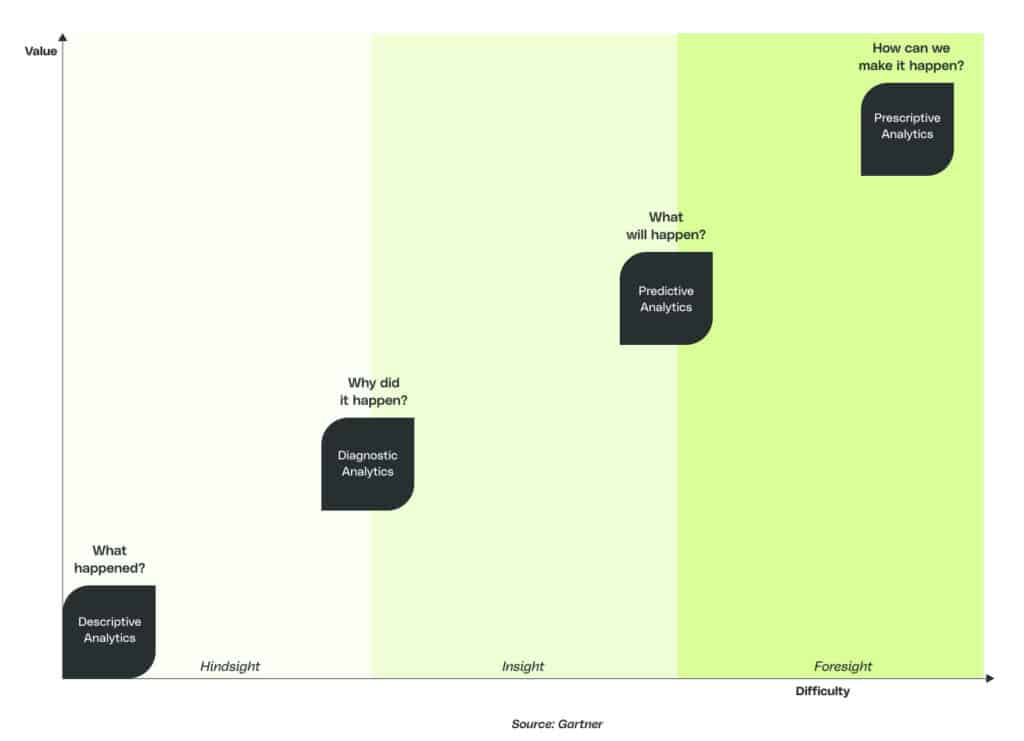
This is the stage where you really start putting your data to work. Data collected from IoT devices — sensor data, user engagement and other metrics — can be analyzed to identify trends. These predictive analytics can then be applied to tasks like predictive maintenance for industrial IoT (IIoT).
Stage four is also where the role of data scientists becomes more critical. These professionals use tools like Python, PyTorch, and AWS SageMaker to build, train, and deploy machine learning (ML) models, but that’s only a small part of the job.
You can’t just throw a bunch of numbers at a data scientist and expect a fully-fledged predictive analytics model in return. You’ll need a cross-disciplinary approach where your data scientists work closely with your engineering teams to develop a data pipeline.
You’ll also need an analytical framework, a way of thinking critically about data and business problems. Sometimes, the hardest part is just finding the right questions to ask.
Likewise, software developers need to understand the data scientists’ priorities so they can figure out if they need to derive any variables, whether to aggregate data or simply push it to the cloud, and even which data points need to go to which databases.
Stage 5: Prescriptive Analytics – Requires premier data science expertise
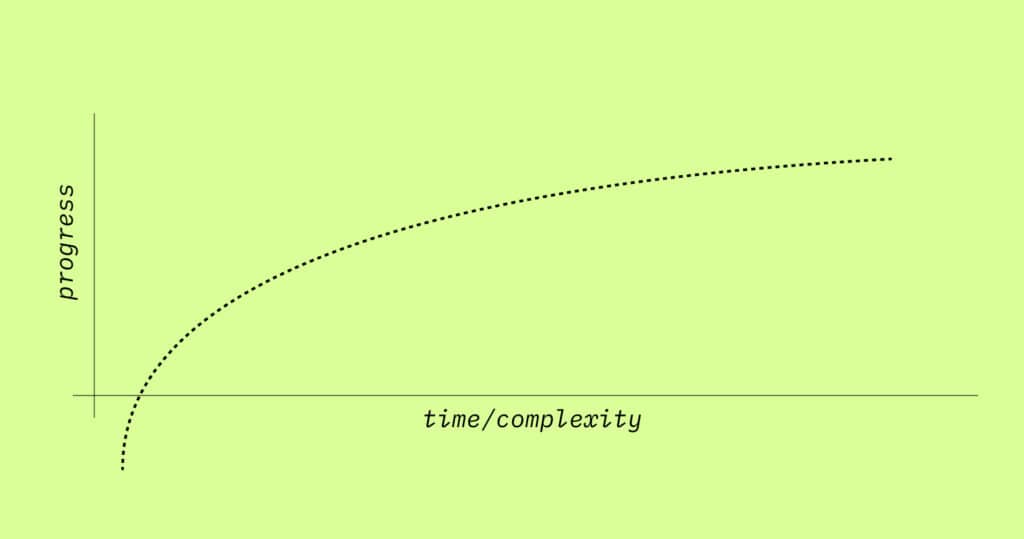
Prescriptive analytics defines stage five, building on the data-driven approach of stage four analytics by then recommending future courses of action.
Because stage five products have the potential to make our lives easier, more convenient, and more enjoyable, prescriptive analytics is an effective selling point for IoT companies looking to offer long-term value to customers.
On the tech side of the equation, stage five includes many of the same elements as stage four, but each of these functions must perform at a much higher level.
In terms of data science, for instance, your scope will drastically expand during stage five development. You’re no longer using a single model, such as anomaly detection for preventative maintenance.
At stage five, you’re using a patchwork of interwoven ML models to pull off some truly spectacular feats. These may include things like Natural Language Processing (NLP) for speech recognition/voice commands, or algorithms that optimize according to the OCEAN personality model.
The result is something that begins to truly resemble artificial intelligence, so it’s not hard to see how these challenges extend beyond data science. Your hardware team, for example, will need to find creative ways to embed even more processing power into the most compact spaces, such as with GPUs for edge computing.
Also worth noting: a stage five product is never truly complete. If you want to continue providing a world-class IoT experience over the long haul, Agile practices such as continuous integration/continuous deployment (CI/CD) are crucial.
Stage 6: Ubiquitous Computing – Will require the world’s authoritative experts in multiple disciplines
The final stage of the IoT maturity model is ubiquitous computing, an endgame where virtually every aspect of daily life includes some interaction with the digital world. Currently, this stage only exists in science fiction, but we might be closer than you think.
The technology required to get here is immense, so for now, all we can do is speculate.
Here’s what we do know: Building a collection of talent in these domains is the biggest obstacle preventing us from entering the world of ubiquitous computing.
It will take a collective masterwork in engineering, software development, data science, user experience design, and likely several other disciplines to pull it off.
Building Capacity for IoT Maturity, Stage-by-Stage
Each step of the IoT Maturity Model is progressively more challenging than the last.
Even the transition from a stage two device to a true stage three IoT product is a massive leap, requiring expertise across multiple domains and mastery of many technologies.
And while today’s most advanced tech companies boast stage five maturity, we don’t have anything close to ubiquitous computing (yet). Thankfully, many of the greatest minds across the globe are working to advance thousands of different technologies — and eventually, we’ll get there.
But, current IoT products are already changing the world. If you’re looking to develop a more mature IoT product, start building your technical capacity now — or find a partner who can help you springboard to the next stage.










